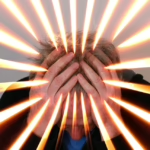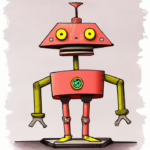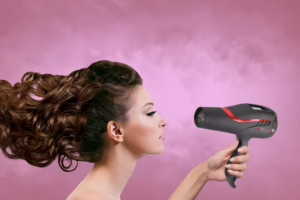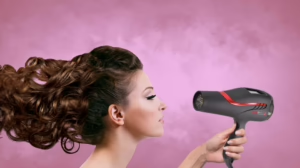Layered or Blunt? Navigating the World of Haircut Styles
Introduction
In the diverse world of hairstyling, the choice between layered and blunt cuts can significantly impact one’s overall look and personal style. This article delves into the characteristics, advantages, and considerations of both haircut styles, aiming to guide readers in making an informed decision that suits their hair type, face shape, and lifestyle.
Understanding Haircuts
Before comparing layered and blunt cuts, it’s essential to understand what these terms mean:
-
Layered Haircuts: A hairstyle where the hair is cut to different lengths. This technique adds volume and texture, making it particularly favorable for those with thick or wavy hair.
-
Blunt Haircuts: A style where the hair is cut straight across, at one length. This cut provides a sharp, polished appearance, often sought after for its simplicity and sophistication.
Layered Haircuts: Definition and Benefits
Characteristics of Layered Haircuts
Layered haircuts are characterized by the intentional cutting of hair into multiple lengths. This results in movement, volume, and texture within the hair. Layers can be added to various lengths of hair, from short bobs to long flowing locks.
Advantages of Layered Haircuts
-
Volume and Movement: Layers can significantly enhance the volume of finer hair. For those with thick hair, layers prevent the dreaded “pyramid” effect, creating a more flattering shape.
-
Versatility: Layered cuts offer a range of styles—from casual beachy waves to formal updos. They can be tailored to suit various occasions.
-
Framing: Layers can beautifully frame the face, adding dimension and softness. This can be particularly flattering for individuals with angular facial features.
-
Easier Maintenance: Although layers require regular trims, they often grow out better than blunt cuts. The different lengths can disguise split ends and overall growth.
-
Texturizing Options: Layers lend themselves well to additional texturizing techniques. Adding curls or waves can transform a layered haircut into a stunning look for any occasion.
Disadvantages of Layered Haircuts
-
Skill Required for Styling: Layered cuts can be more challenging to style than blunt cuts. They may require specific products and techniques to maintain the intended look.
-
May Not Suit All Hair Types: While layers benefit many, they might not be the best choice for extremely curly or tightly coiled hair, as they can lead to frizz and an unmanageable shape.
-
Regular Maintenance: To keep layers looking sharp and intentional, trims every 6-8 weeks are often necessary.
Blunt Haircuts: Definition and Benefits
Characteristics of Blunt Haircuts
Blunt haircuts are defined by their straight-across cut, offering a stylish and edgy finish. This style can be worn at various lengths, from chin-length bobs to waist-length strands, but the hallmark remains a single, sharp edge.
Advantages of Blunt Haircuts
-
Sharp and Clean Look: Blunt cuts offer a polished appearance, making them a popular choice for professional settings or formal occasions.
-
Simplicity: Because they involve less layering, blunt cuts can be easier to style quickly. A sleek, straight finish can often be achieved with minimal products.
-
Suitable for Various Hair Types: Blunt cuts work well with straight, wavy, and even some curly hair types, offering a sophisticated look without much fuss.
-
Optical Illusion: Blunt cuts can create the illusion of thicker hair, which can be especially beneficial for those with finer strands.
-
Low Maintenance: Once you have a blunt cut, maintenance in terms of trims is typically less frequent than with layered hair. A sharp cut can last longer without appearing messy.
Disadvantages of Blunt Haircuts
-
Less Movement: Blunt cuts can sometimes feel stiff or lifeless. They lack the natural movement that layers provide, which might not suit everyone.
-
Requires Specific Styling Techniques: To keep the ends looking fresh and sharp, a blunt cut might require more styling products or regular blow-drying to ensure a sleek look.
-
Growing Out Issues: When blunt cuts grow out, they can often take on an unkempt appearance more rapidly than layered styles, potentially necessitating more frequent trims.
Choosing Between Layered and Blunt Haircuts
When it comes to choosing between layered and blunt haircuts, several factors should be considered:
Hair Type
- Fine Hair: Blunt cuts can create the illusion of thickness. However, layers can add volume and prevent a flat appearance.
- Curly Hair: Blunt cuts might be easier to manage, while layers can lead to frizz if not styled properly.
- Thick Hair: Layers can help manage volume effectively, while blunt cuts might require more regular styling to prevent bulkiness.
Face Shape
-
Round Face: Layered haircuts with long layers can elongate the face, while blunt cuts should be longer to draw attention away from the width.
-
Square Face: Soft layers can soften angular features, but blunt cuts with rounder edges can also create balance.
-
Oval Face: Most styles suit oval faces; both layers and blunt cuts can enhance the natural symmetry.
-
Heart-Shaped Face: Layers can balance out narrower chins, while a blunt cut should ideally fall below the chin.
Lifestyle
-
Maintenance Levels: Consider how much time you’re willing to dedicate to styling and upkeep. Layered cuts may require more frequent trims and styling techniques, while blunt cuts can offer a more relaxed maintenance schedule.
-
Styling Habits: If you enjoy varied styling looks, layers may give you more options. However, if you prefer a simple, straightforward style, a blunt cut may suit your preference.
Styling Tips for Layered Haircuts
-
Use Texturizing Products: Volumizing sprays and mousse can add life to layers, especially for fine or flat hair.
-
Embrace Natural Texture: Allowing your natural waves or curls to shine can enhance a layered look.
-
Invest in Good Tools: High-quality hair tools, such as a curling wand or straightener, can help achieve the desired look.
-
Regular Trims: To keep layers looking fresh, schedule trims every 6-8 weeks.
Styling Tips for Blunt Haircuts
-
Invest in Quality Products: Professional-grade serums can help keep ends looking healthy and prevent split ends.
-
Blow-Dry for Volume: Using a round brush while blow-drying can create a polished, voluminous finish.
-
Regular Maintenance: Book trims every 6-8 weeks to maintain the desired blunt shape and prevent an unkempt appearance.
Conclusion
Choosing between a layered or blunt haircut can be a transformative decision. Both styles offer unique benefits and challenges, which can significantly influence overall appearance and self-expression. Understanding your hair type, face shape, and lifestyle needs is essential in making the right choice.
Ultimately, whether you stick with a classic blunt cut or embrace a textured layered style, the most important aspect is that you feel confident and comfortable in your hair. Experimenting with different styles can also lead to surprising new favorites, so don’t be afraid to change things up from time to time!
References
- Haircuts and Hair Care: Understanding Your Style Needs (2020).
- The Psychology of Hair: How Choices Reflect Personality (2019).
- Hair Trends: What You Need to Know in 2022 (2022).
- Face Shapes and Haircuts: Finding the Best Match (2021).
- A Guide to Cutting Different Hair Types (2021).
By understanding the nuances surrounding layered and blunt haircuts, you can confidently navigate the world of hairstyling, ensuring that your choice enhances not just your appearance but also your personal expression.


























Add Comment